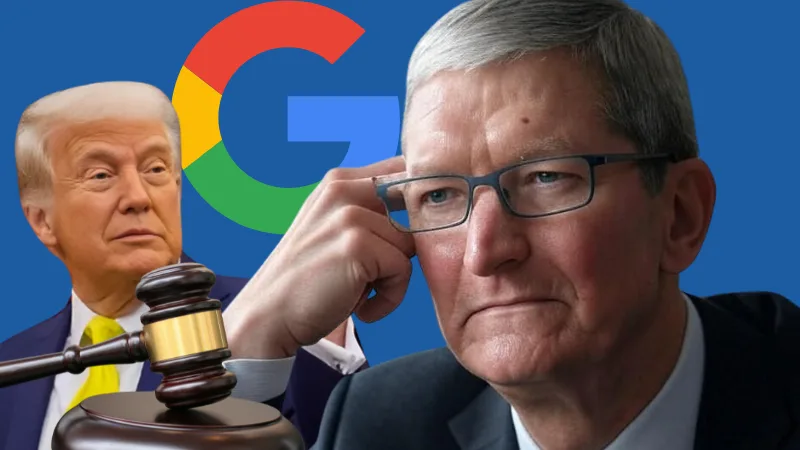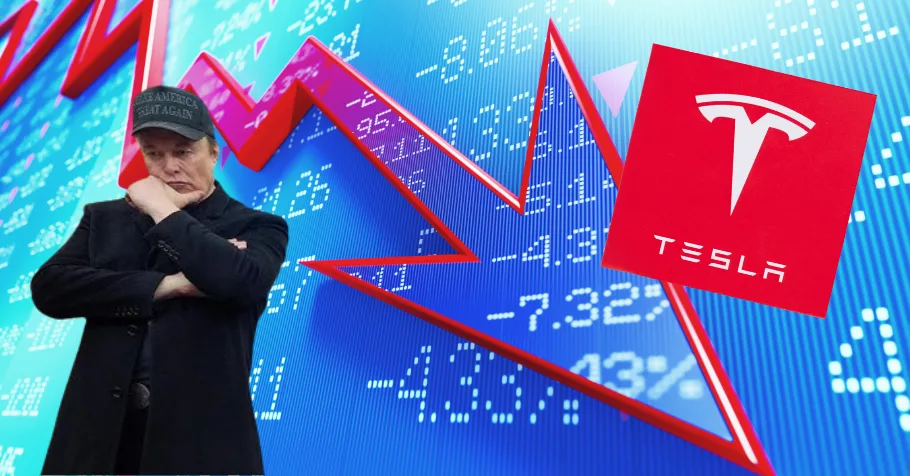Apple CEO Tim Cook is no stranger to high-stakes leadership—but 2025 is shaping up to be one of the most challenging years of his tenure. As President Trump ramps up pressure on major U.S. corporations to bring manufacturing jobs home, Apple has found itself in the crosshairs. Trump’s latest demand? Move iPhone production to the U.S., or face a hefty 25% tariff.
This public callout comes at a time when Apple is already juggling multiple threats—from aggressive regulators in both the U.S. and Europe, to court rulings, legislative pushes, and internal shakeups that could redefine the company’s future. Investors are watching closely, and so far, they’re not thrilled. Apple stock has slid roughly 25% from its all-time high, reflecting growing uncertainty about whether Cook can steer the tech titan through this volatile era.
Trump’s Tariff Threat: Make iPhones in America or Pay Up
President Trump’s stance on American manufacturing has always been firm, but his recent statements directed at Apple have amplified the stakes. On Friday, he made it clear: if Apple doesn’t begin making iPhones on U.S. soil, it will be hit with a 25% tariff. The ultimatum—shared by Trump surrogate Laura Loomer on X with the phrase, “Rise and shine Tim Cook”—signals the administration’s renewed focus on reshoring manufacturing.
For Apple, this poses a complex dilemma. While the company has taken steps to diversify its production footprint, including expanding operations in India, the vast majority of iPhone components are still sourced from Chinese suppliers. Final assembly remains heavily reliant on facilities in mainland China. Building a fully “Made in America” iPhone could balloon costs to over $3,000 per unit—a nonstarter for most consumers.
Though Apple has committed to producing some AI server components in Texas and hinted at expanding chip production domestically, it’s unclear whether these moves will satisfy Trump’s demands. According to recent statements by Treasury Secretary Scott Bessent, the administration is especially interested in seeing more semiconductor production brought back to the U.S., which may offer Cook a path to compromise.
Regulatory Heat from Judges, Lawmakers, and the EU
While Trump’s trade pressure grabs headlines, Apple is simultaneously battling a wave of legal and regulatory setbacks. A U.S. judge recently rebuked Apple for ignoring an injunction aimed at breaking its monopoly over app store payments. The judge noted that Cook’s team “chose poorly” in failing to comply with the order, which was designed to allow developers to bypass Apple’s 30% cut on digital transactions.
The European Union has been equally aggressive. Under the Digital Markets Act, Apple is being forced to open up its ecosystem in ways it has long resisted. Regulators are pushing for alternative app stores, third-party payment methods, and broader interoperability across devices—all of which threaten Apple’s high-margin services business.
Globally, lawmakers are taking cues from Brussels. Similar measures are under review in South Korea, Japan, and even the U.S. Congress, where bipartisan frustration over tech monopolies continues to rise. New legislation could impose age verification requirements for app users, potentially reducing teen engagement and cutting into one of Apple’s most lucrative user segments.
Google’s $20 Billion Deal in Jeopardy
Beyond its own policies, Apple’s reliance on outside partnerships could also face disruption. A pending antitrust decision against Alphabet (Google’s parent company) might force Google to stop paying Apple to remain the default search engine on Safari. This deal is reportedly worth about $20 billion a year—a lucrative, low-effort revenue stream that Apple would struggle to replace.
If regulators unwind that agreement, Apple could lose not only revenue but also control over a key aspect of its user experience. While alternative search engines exist, none are as profitable or widely adopted as Google. This would put further pressure on Apple’s services division, which has become central to the company’s long-term growth strategy.
Jony Ive, OpenAI, and the iPhone’s Existential Challenge
Perhaps the most symbolic threat to Apple’s dominance is coming from inside the house—or at least, from one of its former stars. Jony Ive, the design visionary behind the iPhone, has partnered with OpenAI to develop a next-generation device that could fundamentally change how humans interact with technology.
The project, which stems from OpenAI’s $6.5 billion acquisition of Ive’s startup “LoveFrom IO,” aims to create AI-powered “companion” devices that move people away from screens. OpenAI reportedly hopes to sell over 100 million of these units, shifting the computing paradigm away from the smartphone-centric model that Apple helped create.
Apple executives aren’t blind to the threat. In recent court testimony, long-time executive Eddy Cue acknowledged that “you may not need an iPhone 10 years from now, as crazy as that sounds.” It’s a rare admission from a company known for tight messaging—and it underscores the high stakes Apple faces in the emerging AI landscape.
Playing Catch-Up in AI: Is Patience Still a Virtue?
Historically, Apple has thrived by being a fast follower rather than a first mover. The iPod wasn’t the first MP3 player, the iPhone wasn’t the first smartphone, and the iPad wasn’t the first tablet. But Apple refined each category, delivered a superior user experience, and took the lead.
This strategy is being tested in AI. While competitors like Google, Microsoft, and OpenAI race ahead with groundbreaking products and services, Apple has been relatively quiet. Cook admitted during a recent earnings call that Apple’s next-gen Siri isn’t ready yet, citing the company’s “high quality bar.”
With AI expected to shape the next era of computing, investors and analysts are starting to question whether Apple’s trademark patience will pay off this time. If the company waits too long, it risks losing relevance in a market that is evolving faster than any in recent memory.
Can Apple Sustain Its Profit Margins?
Much of Apple’s market value is built on its ability to command premium pricing and generate exceptional margins—especially in its services segment, where gross margins exceed 70%. But as regulators force the company to open up its app store and developers push for more favorable terms, those margins are under attack.
If lawmakers succeed in pushing through additional regulations—like age-based restrictions on app downloads—it could dent usage patterns and lower in-app spending. Combined with potential losses from the Google search deal and slowing iPhone sales, the cumulative impact could be substantial.
Meanwhile, rivals are making aggressive AI plays, including offering smartphones integrated with generative AI capabilities. Apple’s challenge is twofold: maintaining its position as the world’s top hardware brand, while also proving it can compete in software and AI innovation where nimbleness matters most.
Manufacturing in China: A Geopolitical Tightrope
Arguably the biggest vulnerability in Apple’s empire is its dependence on China. Despite years of efforts to diversify, the bulk of iPhone production remains tied to Chinese factories and suppliers. While some final assembly has moved to India, Apple’s supply chain still runs deep through the Chinese mainland.
This gives Apple some room to shift production to mitigate tariffs—assembling phones in India for U.S. customers, for example—but it doesn’t fundamentally solve the problem. Most internal components still come from China, making the company subject to ongoing geopolitical tensions and trade risks.
Trump’s renewed push for U.S.-based manufacturing adds more pressure. But experts agree that creating a fully American-made iPhone would likely triple production costs. That’s not something Apple—or its customers—are prepared to absorb. Instead, Cook may offer incremental concessions, such as expanding domestic chip production or relocating non-core manufacturing jobs to the U.S.
The Year of Reckoning for Tim Cook and Apple
Apple’s 2025 outlook is defined by uncertainty. Tim Cook faces a perfect storm of regulatory challenges, political ultimatums, competitive disruption, and technological upheaval. While the company has weathered storms before—often emerging stronger—this moment feels different.
With Apple’s stock down, investor confidence shaken, and the pace of innovation accelerating, Cook must find a way to preserve the company’s margins and market position while adapting to the AI revolution and geopolitical realignments. His decisions over the coming months could define Apple’s next decade.
The world is watching—not just investors and regulators, but also consumers who have made Apple a household name. In a landscape that’s shifting faster than ever, the company’s ability to stay patient, adapt, and lead will be put to the ultimate test.





